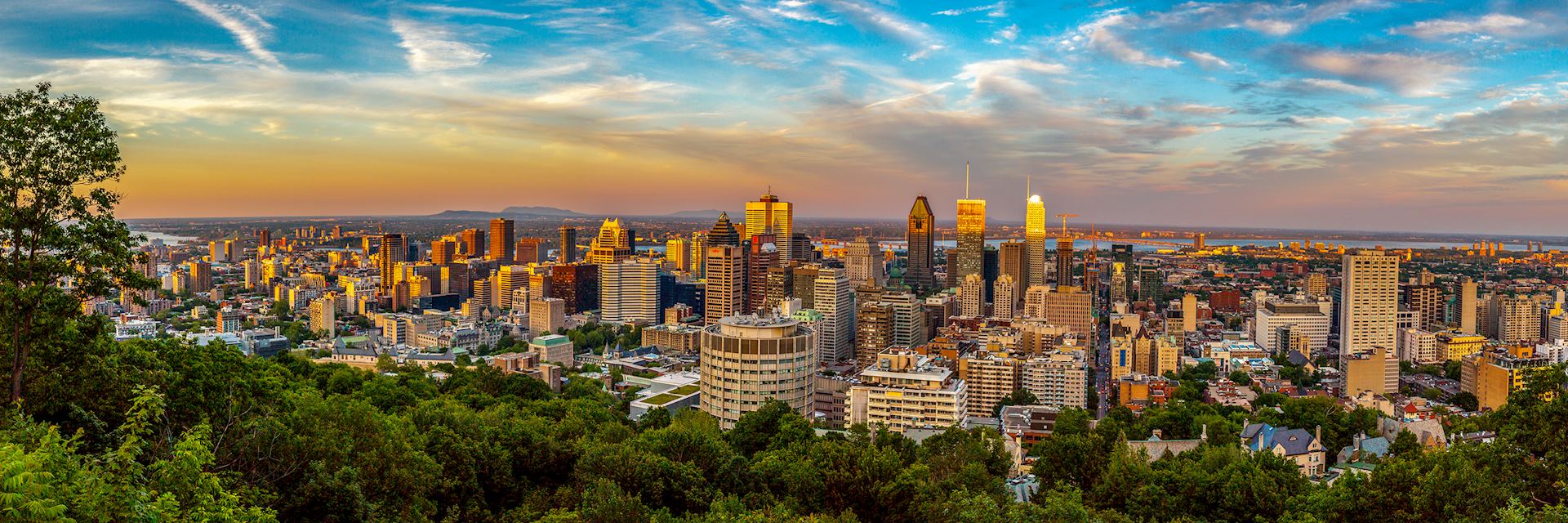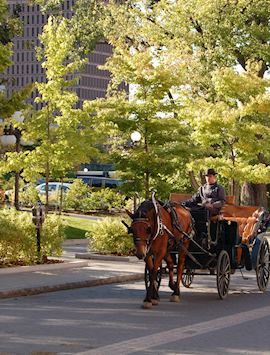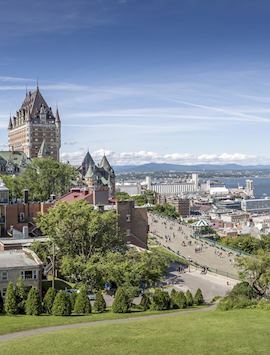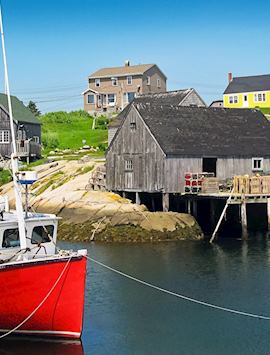By Canada specialist Jon
Whenever I visit Québec, it’s easy to forget that I’m in Canada. You hear French spoken just as much as English, cities have retained their cobbled streets and grand 18th- and 19th-century landmarks, and you can taste the province’s European heritage in its cuisine, from cretons, a type of pork spread, to fèves au lard, slow-cooked beans and pork.
As you drive through gently sloping countryside, you’ll find clapboard villages that feel locked in a time gone by. And, along the untamed coastline, there’s a chance you’ll encounter the largest mammal on Earth, the blue whale.
Whether you’ve visited Canada before and want to experience a different side to the country, or are seeking a trip that takes you into lesser-trodden areas, I find la belle province never disappoints.
How to explore Québec
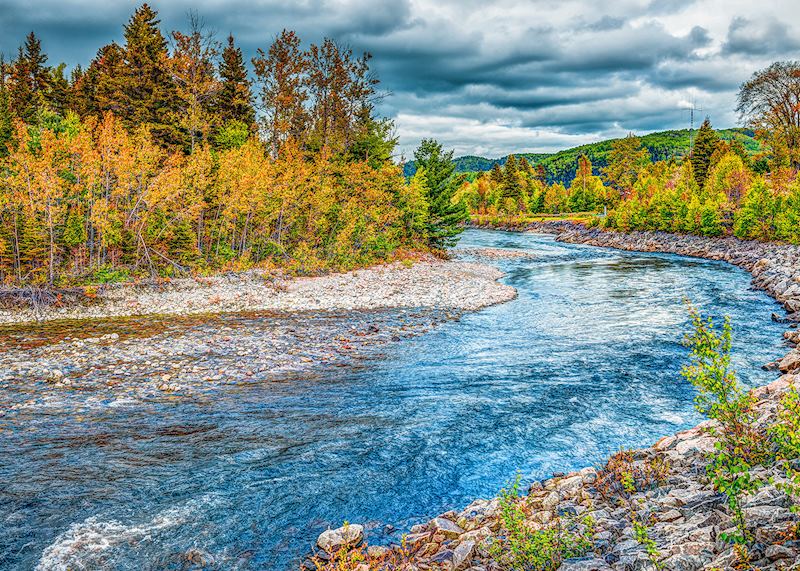
It’s easy to take in many of Québec’s highlights within a couple of weeks. You could hop between the cities by train thanks to the reliable train network. But, there’s far more to explore beyond Québec City and Montréal. I recommend hiring a car to self-drive through the Québecois countryside and along the coast — we’ll sort all the logistics and plan the best route for you.
Another option is to extend your trip by taking The Ocean train across to Halifax, in Nova Scotia, to delve into Canada’s maritime heritage — read about the journey in our guide to Canada’s rail journeys.
History & food in Québec City & Montréal
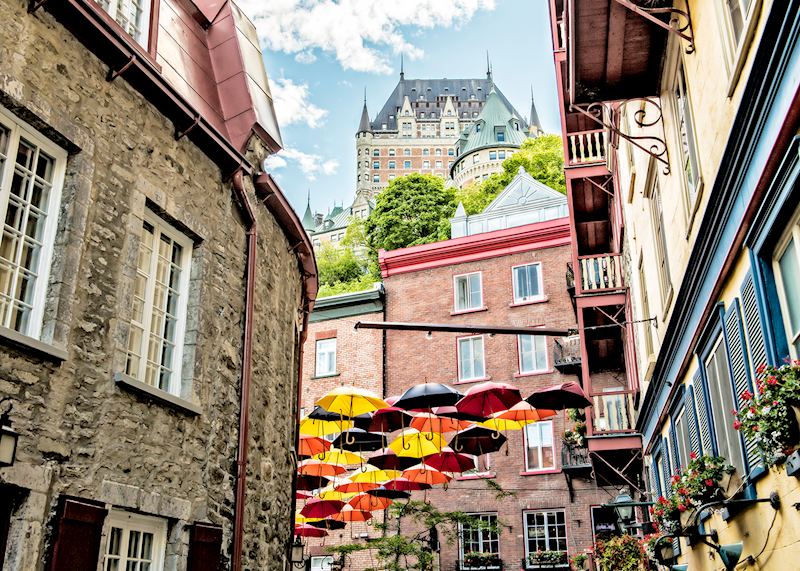
Both of Québec’s main cities have a historic old town where it’s easy to imagine you’ve journeyed back a few centuries — think cobbled streets plied by horse-drawn carriages, and grand buildings that echo the province’s past as it changed hands between the British and the French. I’ve found the best way to appreciate them is by joining walking tours led by local guides who’ll help bring the past to life.
On a walking tour of old Montréal, you’ll see long-standing landmarks including the 19th-century Notre-Dame Basilica. Its Gothic-Revival interior is filled with intricate wood carvings, while stained-glass windows depict the city’s religious history. You can also visit Château Ramezay, formerly a governor's residence and now a modern museum filled with interactive exhibits that regale 500 years of history.
Afterwards, head to the Montréal Botanical Garden, where you can stroll through 20 themed gardens that have everything from medicinal plants to tranquil Japanese water features. For me, Montréal’s food scene challenges that of larger metropolises like New York. In fact, the two cities have an ongoing rivalry, each claiming that their bagels are the best. I’ve tried both and can confirm that Montréal’s have the edge. You’ll also find plenty of watering holes, as this is where many Americans escaped to for a drink during the prohibition years.
Food is also one of the best ways to acquaint yourself with Québec City. We can arrange for you to spend an afternoon walking through the cobbled streets of Old Québec, as well as the city’s more modern areas, with a guide who’ll lead you to the best eateries. The food here is among the most varied I’ve tried (it’s here I first tasted buffalo cheek) and you’ll notice French influences in many dishes — your guide will explain the backstory to each delicacy.
There’s plenty to explore beyond the food, too —this is the oldest fortified city in North America, and it’s crammed with historic sites and churches, earning it UNESCO World Heritage status. You might like to stroll around The Battlefields Park, where two 18th-century battles took place, or visit La Citadelle, a military base since the mid-19th century that forms part of the city’s fortifications. Balance all this sightseeing with time browsing the many independent boutiques, galleries, and cafes.
Where to stay in Montréal & Québec City
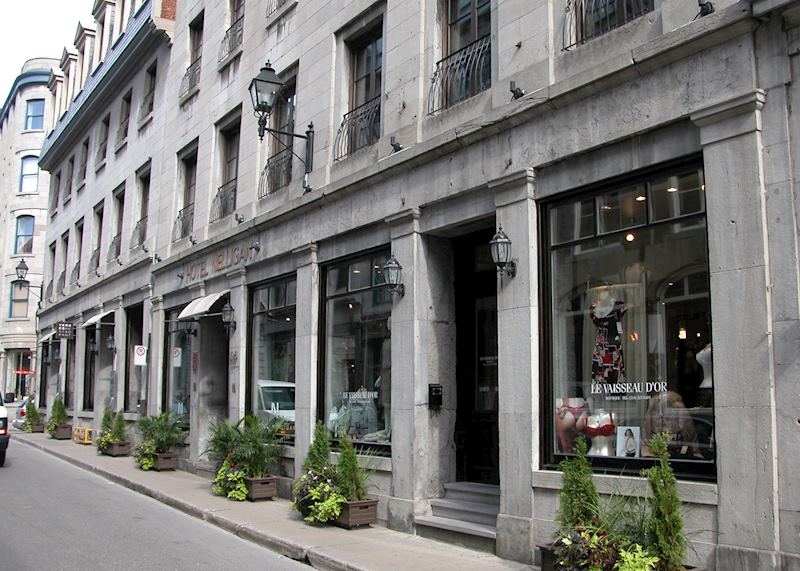
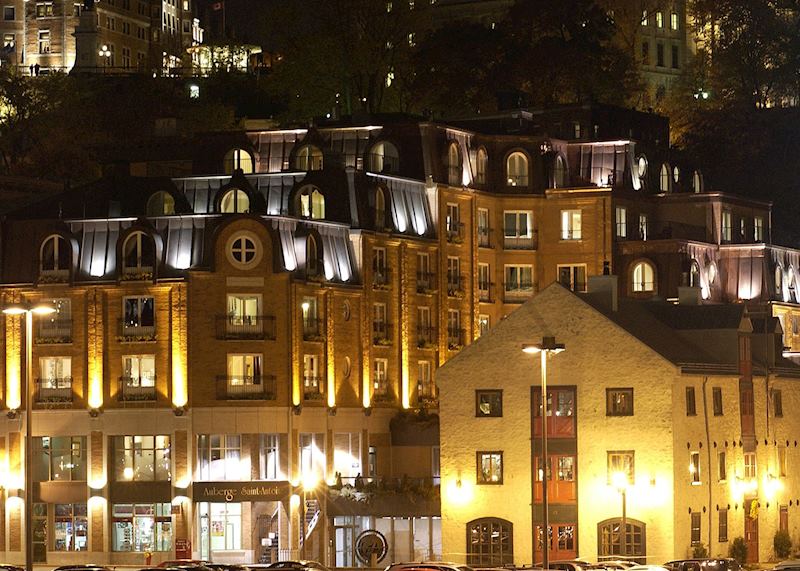
In old Montréal I like Hotel Nelligan. It’s on the small side for a city hotel, so feels more personal. It carefully balances contemporary style with historic touches like exposed stone walls — a reminder that you’re in a 19th-century building.
Québec City’s Auberge Saint Antoine also oozes character and faces the St. Lawrence River. I love how each room has its own style, and the restaurant here is one of the best in the city. Plus, it has its own intimate cinema.
Charlevoix villages & whale watching on the Saguenay Fjord
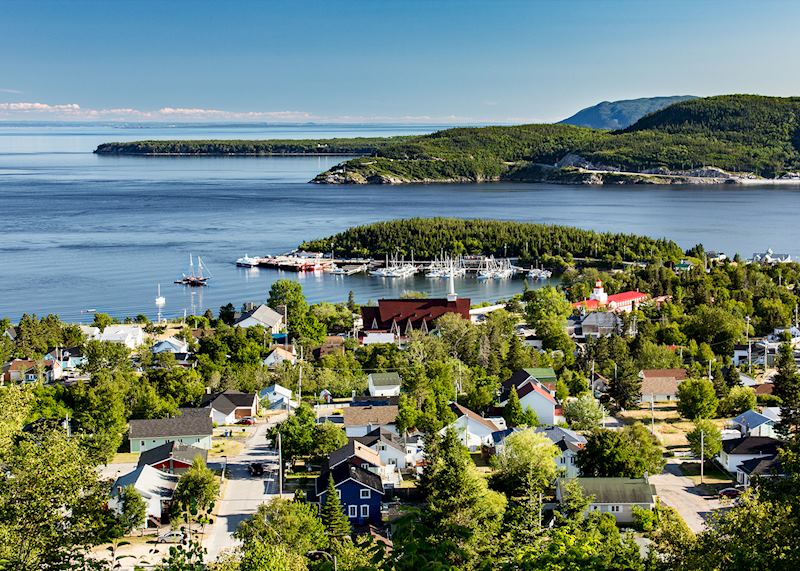
As you drive east from Québec City, you’ll pass through gentle green valleys that cradle small towns and villages with clapboard houses and small, dazzling-white churches. This is the sleepy Charlevoix region, where I’ve found the joy lies in simply stopping on a whim at some of these French-speaking settlements to explore at a leisurely pace, perhaps calling into artisanal shops to try locally produced cheeses, chocolates, and charcuterie.
I’d then drive to Tadoussac, a village that sits at the confluence of the vast St. Lawrence River and the inky-blue Saguenay Fjord. The waters here are prime whale territory, so I recommend joining a boat trip with experts who’ll help spot them. Belugas are sighted year-round, and between May and October you could also see blue, humpback, fin, and minke whales. Back on land, you can hike coastal paths overlooking the fjord and stroll sandy beaches, looking out for whales, seals, and seabirds offshore.
Where to stay in Charlevoix

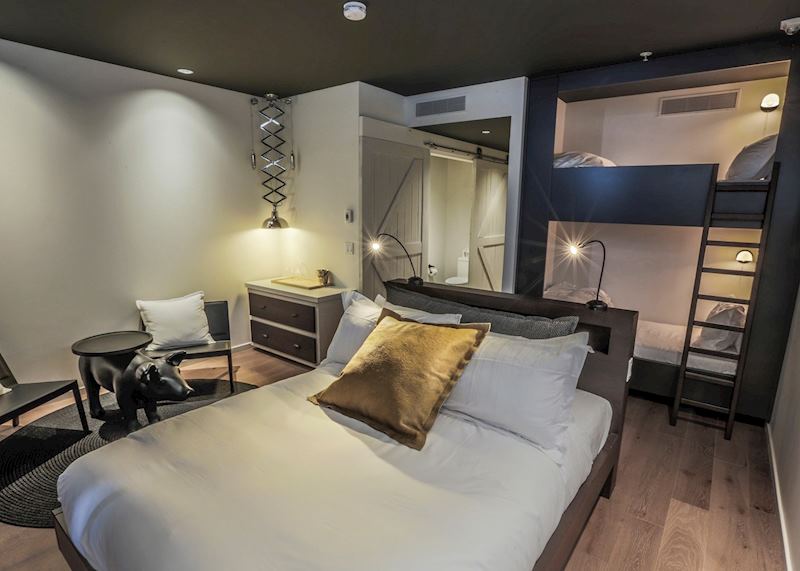
I like the juxtaposition of Hotel Le Germain Charlevoix’s sleek, modern buildings and its location on a working farm, complete with animals and a regular farmers market. Food from the farm is served in the restaurant, and there’s a heated outdoor pool open in summer, which is replaced by an ice-skating rink in the winter months.
Mountains meet coast: the Gaspé Peninsula
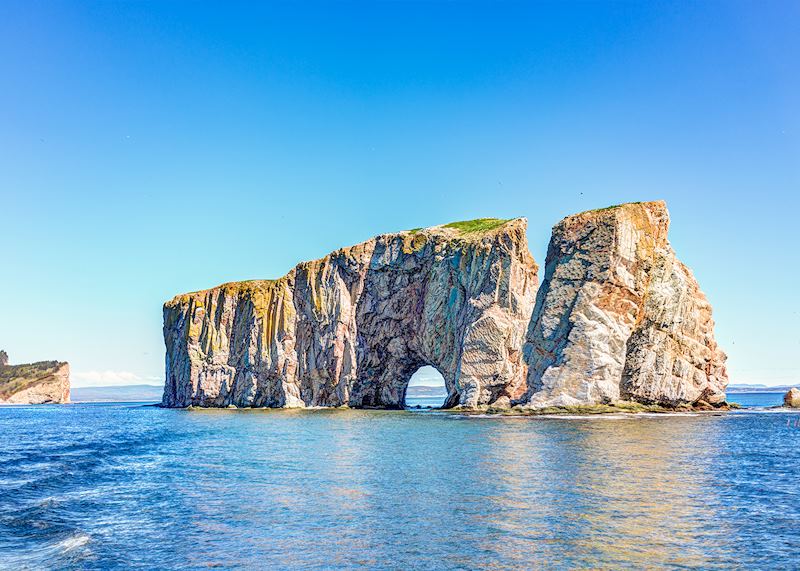
You can either drive straight from Québec City or take a ferry from Saguenay across the St. Lawrence River to reach the Gaspé Peninsula, a hook of land that juts into the Gulf of St. Lawrence and is home to several national parks. I recommend driving a loop around the peninsula, staying overnight at three or four points so you can explore the region thoroughly.
More than 40 lighthouses dot the wave-sculpted coastline, along with quaint seaside towns and craggy rock formations. Percé Rock, a striking limestone arch rising from the waves, is the best known of these. You can join a cruise that takes you up close to learn about its formation and hear about the region’s history, before sailing on to Bonaventure-et-du-Rocher-Percé National Park, where you’ll see one of the largest colonies of northern gannets on the planet.
As you head inland, the scenery changes from coast to mountains and glistening lakes. Much of this scenery falls within Gaspésie National Park, and a highlight of visiting the peninsula is spending a few days hiking the trails that lace the forest-covered Chic-Choc Mountains — look out for moose, which thrive here, as well as caribou and grey foxes. You can also rent a canoe for a peaceful paddle on one of the lakes.
Where to stay on the Gaspé Peninsula

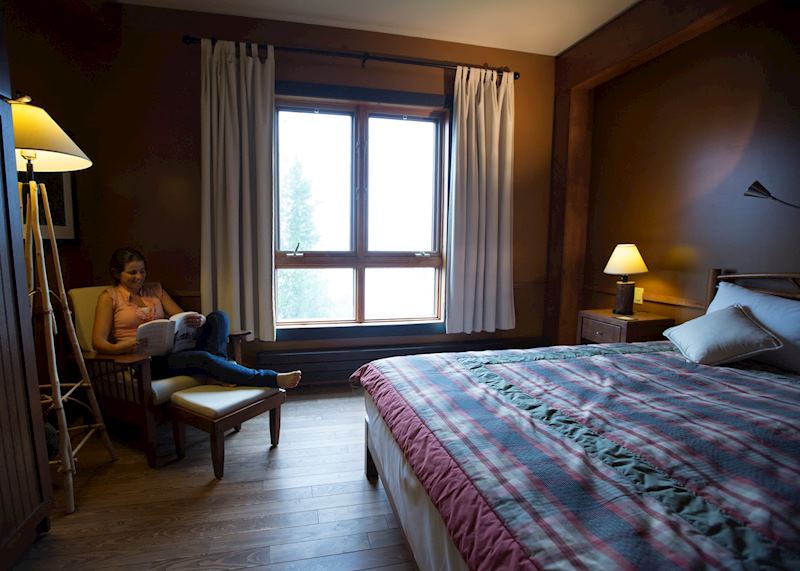
If you’re looking to stay in complete wilderness, you can’t go wrong with Chic-Chocs Mountain Lodge. Set deep in the forested peaks, it can only be reached via an hour’s complimentary bus shuttle. Once there, you have miles of trails all to yourself, with the option of a guide to accompany you. When not out exploring, you can relax in the spa or the outdoor hot tub. The lodge has just 18 rooms and is designed to be kind to the environment, using water pumped from the ground and solar heating.
Experiencing Québec in winter

Winter’s chill heralds a different set of experiences in Québec as the province is often gripped by ice and snow. If you’re willing to wrap up warm, I find it can be a rewarding time to visit. The cities come alive with festive markets fragranced with mulled wine, ice-skating rinks twinkling with lights, and convivial festivals where you can watch artists carve huge chunks of ice into intricate sculptures.
You could also escape the cities and head to Mont-Tremblant, just north of Montréal, to enjoy outdoor activities that make the most of the snow. For example, you could ride an electrically powered fat-bike (bicycles with thick tyres designed for snow) along wintry trails lined with firs — your guide will tailor the route to your group’s ability and fitness.
Or, for a hit of adrenaline, go snowmobiling in a small group through Mont-Tremblant’s Sainte Agathe area, whizzing past snow-laden trees — the vehicles even have heated grips to keep your hands warm.
Where to stay in Québec in winter


Hôtel Quintessence sits on the edge of Lac Tremblant, so you have peaceful views over the water while being just a ten-minute walk from Mont-Tremblant village’s restaurants, cafes, and shops. Its small number of suites have an elegant style, and I particularly like their wood-burning fireplaces.
Best time to visit Québec
When you visit Québec depends on the experiences you want to have. Most people like to visit between early May and late October, when temperatures are mild, hiking trails are open, and whale watching is at its best. Towards the end of the season, you’ll also see the foliage in its autumnal glory. Or, for outdoor activities in the snow and seasonal markets and festivals in the cities, visit in winter (late November to early April) — just bring your warmest clothes.
Start planning your holiday to Québec
Start thinking about your experience. These itineraries are simply suggestions for how you could enjoy some of the same experiences as our specialists. They’re just for inspiration, because your trip will be created around your particular tastes.
View All Tours in Canada
